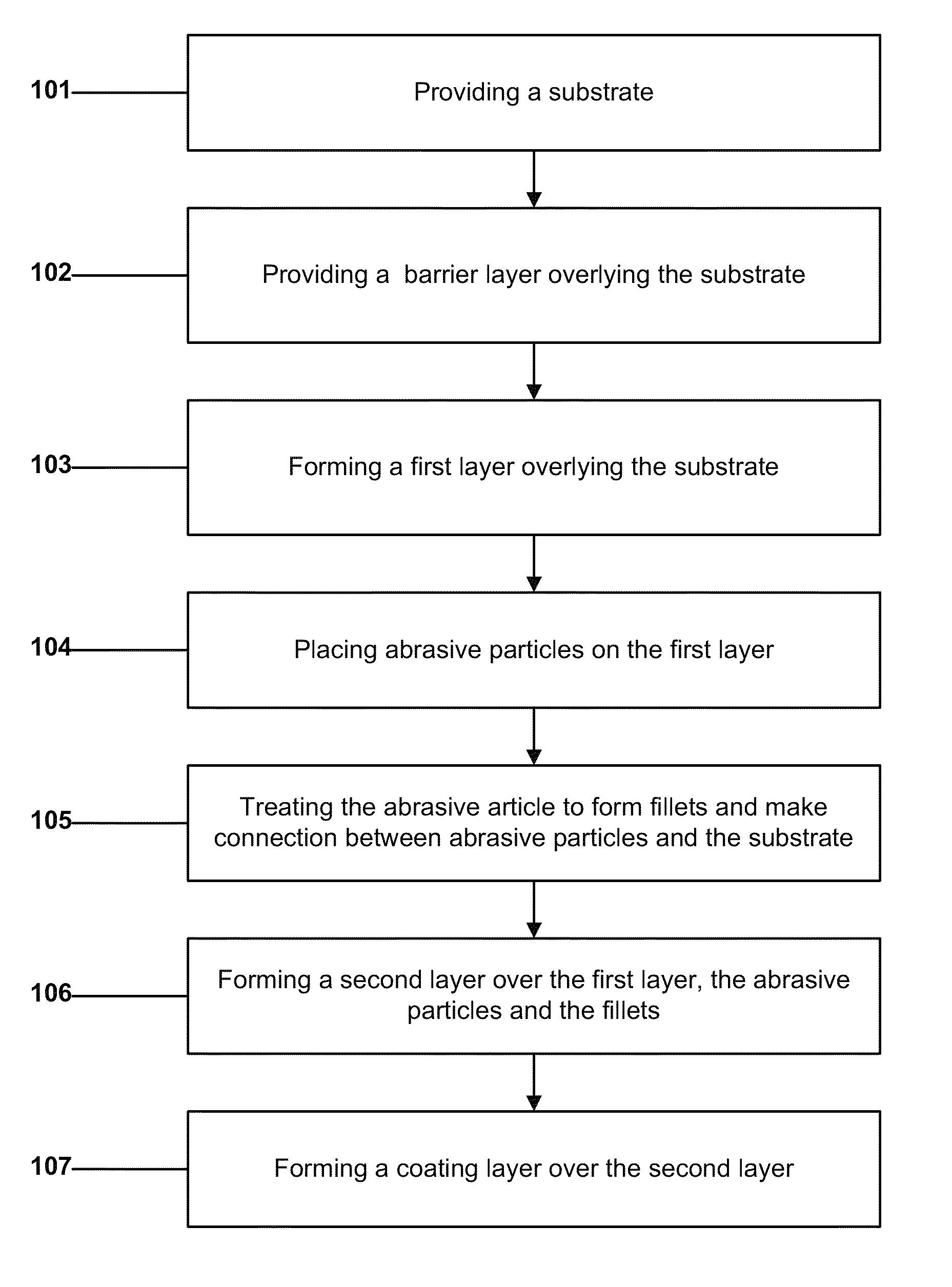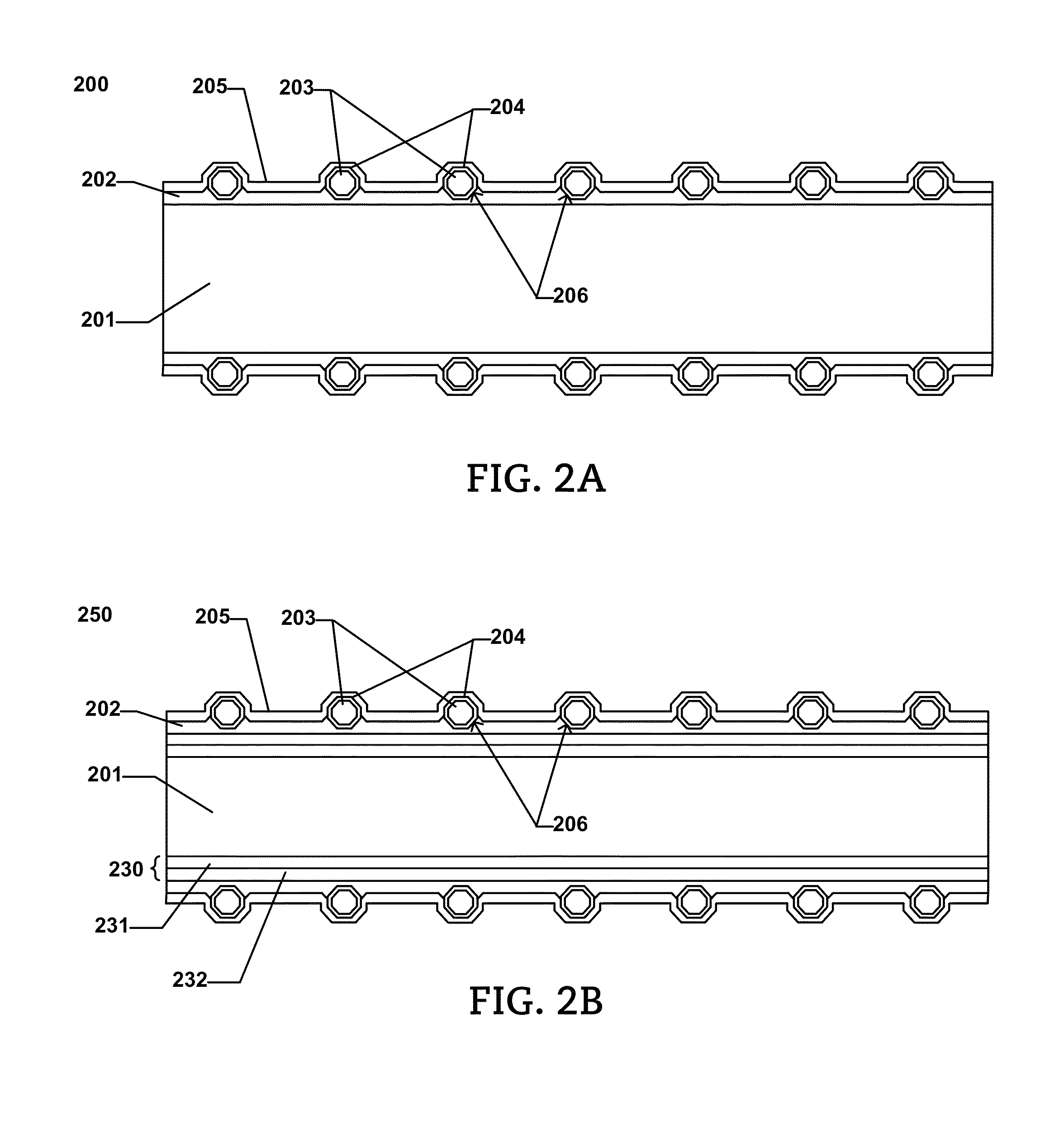Abrasive article and method of forming
a technology of abrasive articles and abrasives, which is applied in the field of single-layered abrasive articles, can solve the problems of reducing the tensile strength of the wire saw, and time-consuming and costly electroplating and sintering operations
- Summary
- Abstract
- Description
- Claims
- Application Information
AI Technical Summary
Benefits of technology
Problems solved by technology
Method used
Image
Examples
example 1
[0309]A length of high strength carbon steel wire is obtained as a substrate. The high strength carbon steel wire has an average diameter of approximately 180 microns. A first layer is formed on the external surface of the substrate via electroplating. The electroplating process forms a first layer having an average thickness of approximately 3.75 microns. The first layer is formed of an essentially pure tin composition.
[0310]After forming the first layer, flux material is applied on the wire with nickel-coated diamond abrasive particles having an average particle size of between 30 to 40 microns.
[0311]Thereafter, the substrate, first layer, and abrasive particles undergo tin re-flow heating (diamond tacking) in a furnace at a temperature sufficient to heat the first layer to a re-flow temperature between 30° C. and 50° C. above the melting temperature of the first layer (i.e., melting temperature for tin is 232° C.). The abrasive pre-form is then cooled and rinsed. The process of b...
example 2
[0314]A length of high strength carbon steel wire is obtained as a substrate. The high strength carbon steel wire has an average diameter of approximately 180 microns. A first layer is formed on the external surface of the substrate via electroplating. The electroplating process forms a first layer having an average thickness of approximately 3.75 microns. The first layer is formed of an essentially pure tin composition.
[0315]After forming the first layer, flux material is applied on the wire with nickel-coated diamond abrasive particles having an average particle size of between 30 to 40 microns.
[0316]Thereafter, the substrate, first layer, and abrasive particles undergo tin re-flow heating (diamond tacking) in a furnace at a temperature sufficient to heat the first layer to a re-flow temperature between 1° C. and 10° C. above the melting temperature of the first layer (i.e., melting temperature for tin is 232° C.). The abrasive pre-form is then cooled and rinsed. The process of bo...
PUM
 Login to View More
Login to View More Abstract
Description
Claims
Application Information
 Login to View More
Login to View More - R&D
- Intellectual Property
- Life Sciences
- Materials
- Tech Scout
- Unparalleled Data Quality
- Higher Quality Content
- 60% Fewer Hallucinations
Browse by: Latest US Patents, China's latest patents, Technical Efficacy Thesaurus, Application Domain, Technology Topic, Popular Technical Reports.
© 2025 PatSnap. All rights reserved.Legal|Privacy policy|Modern Slavery Act Transparency Statement|Sitemap|About US| Contact US: help@patsnap.com



